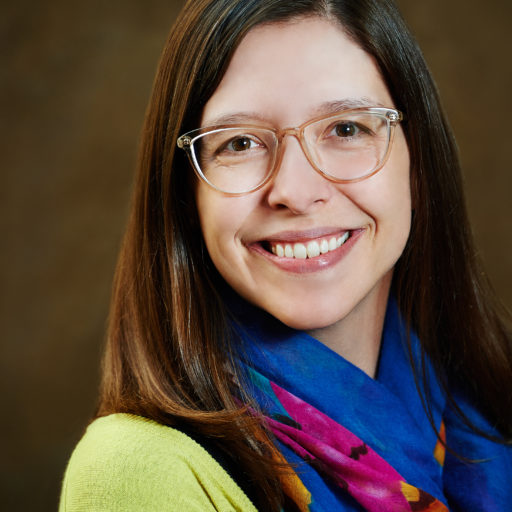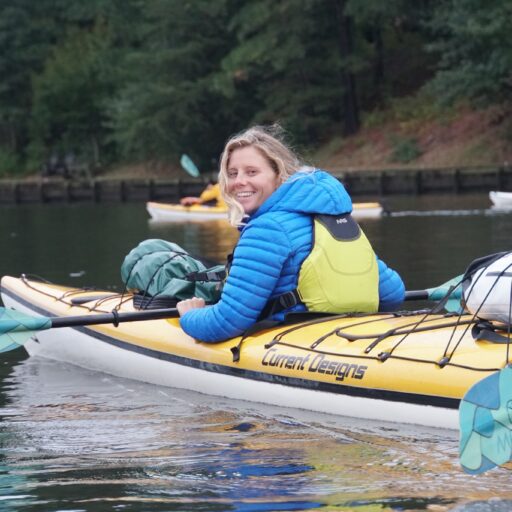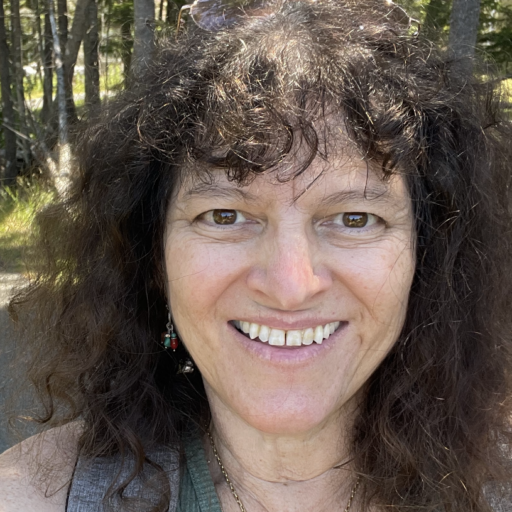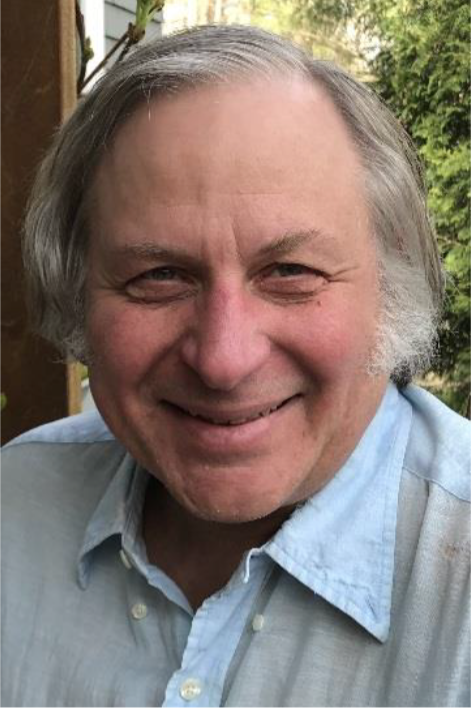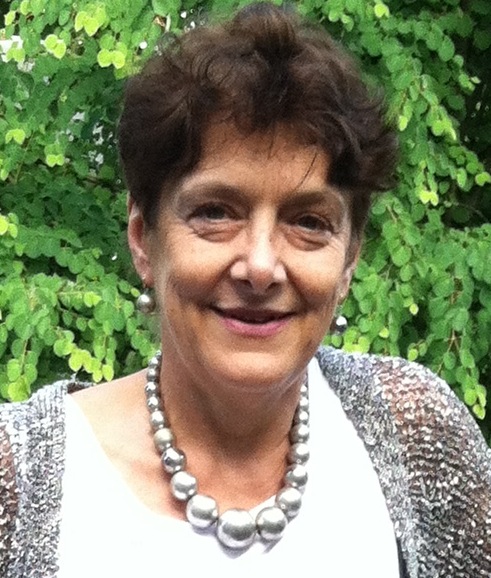Introduction
Climate change affects all communities and its impacts are certain to worsen. However, the greatest impacts of climate change are predicted to fall on communities that, for a range of historical, political, social, and economic reasons, disproportionately lack resources, such as financial help for mitigation and equitable participation in decision-making (EPA, 2022). Consequently, strongly affected communities are often least able to prepare and respond. Thus, climate change science—both the impacts and the solutions—is both a matter of natural science and of social science.
Moreover, the scale of the climate crisis and its effects on human well-being mean that learning about climate science and associated environmental injustice evokes powerful emotions like grief, anger, and anxiety. Young people especially suffer: 84% of respondents in a recent global survey said they were moderately to very worried, and more than 45% said their daily life and functioning were negatively affected (Hickman et al., 2021). How can teachers design educational experiences that help young people build their capacity to understand climate change and injustice without feeling overwhelmed?
Learning to use knowledge to take action that can mitigate or adapt to climate change is a powerful way to counteract these emotional costs (Mortreaux et al., 2023). This can help young people both learn and apply science to solve climate-related problems. High school teachers increasingly seek to work alongside their students to relate the science of climate change, mitigation, and adaptation to their immediate world (NAAEE, 2022).
Recent publications aimed at science teachers connect educators to resources for socially responsive science teaching around climate (e.g., Patterson, Williams & Gray 2021; Kirkland and Poppleton, 2021; Drayton et al., 2022; Beaver et al., 2023). However, concrete examples of practices and lesson ideas used by classroom teachers are missing from the current frameworks.
In this article, we share “Growing Climate Justice Education,” a framework for teachers and their school communities developed around the practices of our growing nationwide community of high school educators and science and math education researchers (see Figure 1). This framework captures the essence of how our teachers support high-leverage climate learning, aligned with Next Generation Science Standards (NGSS Lead States, 2013), considering both science and justice. Our hope is that teachers can use it to identify concrete, accessible ways to develop greater competence in climate justice education.
Figure 1
The Growing Climate Justice Education Framework
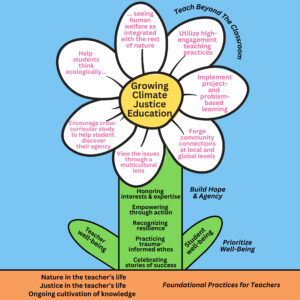
Developing the Framework
Historically, science and math education has been the main context within which people learn about climate; however, we now know that climate change impacts and solutions demand our understanding of Indigenous ways of knowing (e.g., traditional ecological knowledge), environmental justice and anti-racism, and social and gender biases (Kirkland & Poppleton, 2021).To launch a network of teachers doing such work in their classrooms, the John D. and Catherine T. MacArthur Foundation engaged TERC, an internationally known research and development center for STEM education, to pilot a Climate and Equity Institute. We were among the twelve teachers and two facilitators from rural, suburban, and urban public and private schools across the country gathered at Schoodic Institute in Acadia National Park for one week of study, conversation, idea-generation, and renewal. From the wealth of knowledge shared by participating teachers, facilitators, and guest speakers, we started to find common ground in what we began to see as best practices for teaching climate justice in the K-12 setting.
Grounding Principles for Climate Justice Education
Using comprehensive meeting notes, individual interviews and email messages as data, we employed a constructivist, community-focused, iterative process to develop the framework’s summary of methods for building personal and professional capacity for climate justice education. Analysis revealed that teachers who participated in the institute all adopt certain foundational practices (Tables 1 and 2), including engaging with nature and justice beyond traditionalized teacher role(s), to deliver effective education.
Table 1
Foundational practices for climate justice educators.

Table 2
Attending to teacher and student well-being.
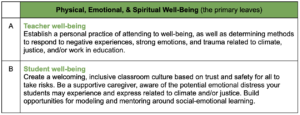
Teachers reported their personal connections with the natural world arise from practices that included spending time in nature, maintaining a garden or houseplants, walking as part of a daily commute, selecting a “sit spot” to visit frequently, and seeking out nature intentionally—even in highly urbanized spaces. To learn about justice, cohort teachers search for media and experiences that deepen their understandings of how to fight inequity on personal and systemic levels. Participants in the institute, we discovered, hold non-overlapping knowledge of and participation in justice and social issues, but each is working to intentionally reduce the gap between values and actions.
Additionally, our teachers take a learning stance in both their personal and professional lives—one cohort member, Carl, is a science teacher who writes climate fiction and poetry; Eva is an explorer in the kitchen, learning to make lower-impact food choices—and all of us seek out regular professional learning opportunities about justice-oriented and climate-oriented topics and enjoy trying new activities in our classrooms. Additionally, our teachers take a learning stance in both their personal and professional lives This positioning of teacher-as-learner allows teachers to do more than increase their own personal resilience and knowledge; as Ronnie, an educator who teaches and directs a place-based environmental semester program, says, “As a teacher, I only do what I do because I spend so much of my personal time exploring and learning about my area. This includes connecting with all kinds of different community members, whom I have then invited to work with my students.”
Furthermore, attending to student well-being is vitally important (Newberry Le Vay et al., 2024). Each cohort teacher creates inclusive classroom cultures where students feel safe in taking intellectual risks, particularly students who hold identities that have been marginalized by the inequitable history of schooling. Cedric structures difficult conversations in his classroom with protocols to encourage student risk-taking, and Kirstin’s students resubmit most assignments for full credit after teacher feedback. Martha’s learners engage in playful activities like card-game roleplays and reading picture books to help climate engagement feel emotionally manageable; Ronnie’s students keep a weekly journal in which they sit outside to observe, draw, reflect, and write. Additionally, our teachers develop knowledge of their students’ “justice history,” learning about specific inequities faced by students and their communities; for example, Ronnie’s students learn about loss of livelihood in their coastal community due to ocean warming. For all of us, teaching is relational, and creating a socially healthful learning environment is as important as curriculum.
Teachers’ sense of well-being can also affect their own efficacy and capacity to realize their pedagogical vision. Many climate professionals experience climate-change related stress themselves (Gilford et al., 2019), and teachers are no exception (Clayton et al., 2023). Educators must address our own climate anxiety or grief in a way that enables us to help students build emotional and intellectual resources for resilience in the face of the climate crisis (Ojala, 2023).
Building Hope and Agency by Teaching Beyond the Classroom
Climate change and related inequitable impacts are daunting, but intentionally building hope and agency through high-leverage teaching strategies can motivate students to take action (Tables 3 and 4), addressing the global injustices exacerbated by global warming as well as prioritizing equitable solutions. Each cohort teacher uses multiple strategies for helping students understand that they can make a difference; these fit into at least one category in Tables 3 or 4. Examples of ways that teachers have realized these stances in their classes follow and specific resources teachers use can be found in Appendix A.
Table 3
Teacher stances for building student hope and agency.

Table 4
Curricular strategies to teach climate justice beyond the classroom.
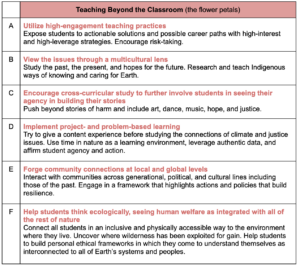
Honor students’ interests and expertise: Building curriculum around student interest. Eva centers the connection between climate change and food security as her students investigate how destabilized growing seasons and precipitation patterns may have changed their favorite foods’ availability and nutritional value. Denise’s students match the lyrics of songs well-loved in her community (for example, “Mercy Mercy Me” by Marvin Gaye) to corresponding environmental issues, then explore a timeline of legislative action on air quality to build student interest. Abe’s students build speculative fiction worlds based on the research of a local environmental scientist. In each case, students’ interests provide invitations into climate and equity engagement.
Forge community connections at local and global levels: Connecting students directly with their local environment. A major priority for all of us is taking students outside, whether it’s for service opportunities like removing invasive species (see Appendix A for resources), collecting data, or engaging with the environment in other place-based ways. Carl’s students relate a close look at lawns in their suburban area to the history of lawns as a class-based cultural phenomenon. Kirstin’s semi-rural biology students report monthly on their “sit spots” and interview elders about how land usage has changed over time to uncover environmental degradation.
Implement project- and problem-based learning: Putting the power of data into students’ hands. Students in Sara and Sarah’s classes use national databases (see Appendix A for resources), story collections, and case studies to explore authentic data on national and regional scales that highlight the inequitable impact of climate change. Margo’s students build data literacy by embracing variability and questioning how and why we work with climate data. Tanya’s students take on the role of serving on a climate justice agency panel, matching real-life climate solutions to the support that might best forward the projects’ individual missions (Flores, 2023). In many of our classrooms, simulations (see Appendix A for resources) engage students in prototyping and iterating global climate policy using current projections. In each of these scenarios, students leverage the power of data to formulate action plans that address environmental and social impact.
Implement project- and problem-based learning: Finding ways to help students “think globally and act locally.” Doing this well requires the previous components, but it is the most important through-line of our cohort’s work. Focusing on place-based education keeps lesson-planning and student projects manageable, while maintaining opportunities for action to help students experience agency, address inequity, and promote hope. Many of our cohort have created large-scale projects: Ronnie and Sarah administer large-scale place-based programming centers at their schools, Carl and his botany classes continually re-design and maintain a substantial reconstructed prairie near school grounds, and Margo’s students learn to meet with state senators and representatives to discuss proposed legislation. However, an equal number of us have supported students in smaller-scale actions. Kirstin’s students created a heat-fighting mural at their local science museum to protect a major bike path from worsening urban heat, and Denise and her students have built school gardens to support biodiversity. Many of us have students create public service announcements and/or write elected officials with science-focused suggestions on climate policy, then make their work public to the community at large.
Where to Begin?
Teachers don’t need to design a standalone course on climate justice. Rather, our cohort’s experiences indicate that by framing learning about climate change science and environmental injustice as the norm, they open avenues for students to address the powerful emotional challenge that climate change and its inequitable impacts poses (see Trott et al., 2023). This framing also empowers students to take action and to confront issues of inequity that are rooted in historic patterns of injustice.
Begin by identifying places in your curriculum—in Earth science, environmental science, biology, physics, or chemistry—where you can expand lessons by taking up just one or two of the recommendations below. To help, we’ve connected ideas shared throughout this text and the Growing Climate Justice Education framework to the Next Generation Science Standards (see Appendix B ).
- Develop place-based, action-based project learning. Our teachers have found that providing students opportunities to develop local solutions to global problems has resulted in exceptional engagement. Herrmann’s (2021) framework is a particularly helpful scaffold for developing authentic projects at the secondary level.
- Frame your students’ work with global goals in mind. Many of us use sustainability frameworks (see Appendix A) to promote students’ consideration of ways forward. Martha notes that the Global Goals framework helps acclimate students to “good discussion, early on, about topics like literacy, education, and gender equality that are part of environmental justice movements but are not usually taught in science class.”
- Connect with others, in the school and community, with similar goals. Find local non-profits, civic groups, municipal departments, or school district offices working on environmental and/or justice issues. As Ronnie notes, “We connect with a local environmental non-profit that does education, advocacy, and restoration work. I work closely with a member on their policy team, who comes to my class to discuss the legislative process. The students learn how interest groups and their coalitions influence politicians, and about how certain bills get proposed.” You can also enlist local foundations or businesses who fund grants for student projects in your region. Partnering with colleagues within your department and even across disciplines can also build school capacity for creative problem-solving.
- Seek out resources that center traditional and diverse ways of understanding the environment, and that feature a focus on solutions. Works like Braiding Sweetgrass (Kimmerer, 2015) and “The Trouble with Wilderness” (Cronon, 1995) provide important context for NGSS standards on ecology, matter cycling, energy flow, and human activity. For solutions-oriented resources from diverse voices, consider the nonfiction anthologies All We Can Save (Johnson & Wilkinson, 2020) or Not Too Late (Lutunatabua & Solnit, 2023) to help students build more inclusive and solutions-oriented ideas of what the future can hold (see Appendix A).
- Finally, remember to celebrate success. Stories of harm can be helpful but can further stigmatize victims of injustice. To combat this effect, push beyond damage narratives to share examples of climate hope. For Abe’s students, redefining wilderness and collaborating with scientists to uncover the “health” of the Bronx River ecosystem has provided a hyperlocal story of redemption and promise, shifting how students saw their environment and themselves. Martha’s oceanography class researches justice-oriented non-profits and “adopts” them, celebrating their victories over the semester. However you decide to celebrate hopeful current events in your teaching, both you and your students will benefit from feeling connected to a network of positive change.
Conclusion
In the challenging era before us, students will undoubtedly need an understanding of environmental change. They will also need to understand the social, political, historical, and cultural circumstances that resulted in that change. In the challenging era before us, students will undoubtedly need an understanding of environmental change. In addition, they’ll require skills for navigating lives that will be more and more affected by environmental disaster—adapting their daily actions, mobilizing for governmental change, and managing the emotional distress generated by environmental destruction and injustice.
Using the Growing Climate Justice Education framework to center our work has deepened our students’ capacity for authentic science practice and problem-solving while leveraging action to serve as powerful protection from climate anxiety for both students and teachers. To teach this way, in the words of Tanya, is to “frame [climate learning] in a positive and hopeful light. My intention is to empower and encourage my students to be change makers while steering them away from an incapacitating sense of hopelessness.” Not only does this make for engaging and rigorous science experiences, it also involves students in civics, relational learning, collaborative thinking, and communication, building avenues for personal agency, action, and impact well beyond the classroom.
Acknowledgements
We thank the 2022 cohort and supporting staff of the Climate & Equity Summer Institute for Teaching and Learning and of Schoodic, as well as the John D. and Catherine T. MacArthur Foundation for funding this work.
Appendix A
Resources for teaching climate hope referenced in the text.
Online resources:
Weed Wrangle (www.weedwrangle.org)
Find a Weed Wrangle chapter near you, or work to start one with your local parks department or cooperative extension, in order to bring volunteers together to control invasive plant species in your community.
EPA EnviroAtlas (www.epa.gov/enviroatlas)
By combining environmental and demographic data and predictions on one map, students can use this tool from the Environmental Protection Agency to investigate patterns that both provide high-interest phenomena and spark ideas for project- and problem-based learning.
En-ROADS (en-roads.climateinteractive.org)
This engaging online simulation of the effects of potential climate policies is accessible yet detailed for those who are interested in digging into the underlying assumptions of the model, which are updated regularly. En-ROADS, created by Climate Interactive in partnership with MIT, is a wonderful tool to craft policy workshops, role-playing games, or design challenges for students; it pairs well with Project Drawdown’s more thorough descriptions of climate solutions.
Project Drawdown (drawdown.org)
Project Drawdown’s team regularly updates (and shares methodology for) calculations of how much greenhouse gas might be reduced or sequestered by various climate solutions. Students will be drawn to accessible introductions as well as ideas for next steps.
UN Sustainable Development Goals (sdgs.un.org/goals)
These seventeen goals were adopted by all UN member states in 2015, and many are directly or indirectly linked to climate justice (#2 is Zero Hunger, while #11 is Sustainable Cities and Communities). The official UN webpage has engaging descriptions of each as well as progress reports and descriptions of ongoing efforts towards meeting the goals.
Suggested readings to excerpt for students:
Braiding Sweetgrass (2015) by Robin Wall Kimmerer (adapted for young adults by Monique Gray Smith in 2022).
Kimmerer is a Potawatomi botanist and educator who shows readers how Indigenous knowledge can complement and extend contemporary scientific understandings.
“The Trouble with Wilderness” (1995) by Walter Cronon.
In this widely-read essay, Cronon unpacks the idea that idealizing the fantasy of untouched, pristine wilderness allows people to see humanity as separate from nature, and therefore less likely to work to protect less pristine spaces.
All We Can Save (2020), edited by Ayana Elizabeth Johnson and Katharine K. Wikinson.
This inclusion- and solutions-oriented anthology, collecting writing from sixty women holding diverse roles in the climate movement, is accompanied online by an extensive yet accessible educator toolkit.
Not Too Late (2003), edited by Rebecca Solnit and Thelma Young Lutunatabua.
The diverse professional and personal identities of the contributors to this anthology bring a plurality of uplifting perspectives on how to address climate anxiety through learning and action. A helpful study guide is available on the project’s website.
Appendix B
Recommendations, and examples, for getting started on climate justice education, with relevant Next Generation Science Standards that can be addressed.
1. Develop place-based, action-based project learning
| Recommendations for getting started, with examples | NGSS standards that can be addressed* |
| Investigate impact of destabilized growing seasons and precipitation levels on availability and nutritional value of students’ favorite foods; or build gardens to support biodiversity, traditional crops, native plants | LS2.C: Ecosystem dynamics, functioning, and resilience – anthropogenic changes (HS-LS2-7) LS4.D: Biodiversity and humans – adverse impacts of human activity (HS-LS-4-6) ESS2.D: Weather and Climate |
| Investigate lawns and relate to the history of lawns as a class-based cultural phenomenon | LS2.C: Ecosystem dynamics, functioning, and resilience – anthropogenic changes (HS-LS2-7) LS4.D: Biodiversity and humans – adverse impacts of human activity (HS-LS-4-6) |
| Re-design and maintain a natural area near school grounds | LS2.C: Ecosystem dynamics, functioning, and resilience – anthropogenic changes (HS-LS2-7) HS-ESS3: Earth and Human Activity |
2. Frame students’ work with global goals in mind
| Recommendations for getting started, with examples |
NGSS standards that can be addressed* |
| Leverage national databases (e.g., EPA) coupled with case studies to explore data on different scales that highlight the inequitable impact of climate change | HS-ESS3: Earth and Human Activity – analyze global data to make forecasts (HS-ESS3-5);
ESS3.D: Global Climate Change |
| Use the Global Goals framework to support student discussion on topics like literacy, education, and gender equality that are relevant to environmental justice | HS-ESS3: Earth and Human Activity – analyze global data to make forecasts (HS-ESS3-5) HS-ETS1-1: Analyze a major global challenge to specify qualitative and quantitative criteria and constraints that account for societal needs and wants. |
| Match an appealing cultural artifact, e.g., lyrics of popular songs, to corresponding environmental issues, explore a timeline of legislative action related to the issue | HS-LS2-7: Design and evaluate a solution for reducing the impacts of human activities on the environment and biodiversity ESS3.C: Human impacts on Earth systems |
3. Connect with others who have similar goals in the school and community
| Recommendations for getting started, with examples | NGSS standards that can be addressed* |
| Create a heat-fighting mural at a local public building to mitigate worsening urban heat | HS-ESS3-4: Evaluate or refine a technological solution that reduces impacts of human activities on natural systems. |
| Work with a local environmental non-profit that does advocacy and restoration work to learn how interest groups influence politicians | HS-ESS3-2: Scientific knowledge indicates what can happen in natural systems – not what should happen. The latter involves ethics, values, and human decisions about the use of knowledge. |
| Research and “adopt” justice-oriented non-profits and track their victories over time | HS-ESS3-2: Scientific knowledge indicates what can happen in natural systems – not what should happen. The latter involves ethics, values, and human decisions about the use of knowledge. |
4. Seek out resources that center traditional and diverse ways of understanding the environment
| Recommendations for getting started, with examples | NGSS standards that can be addressed* |
| Report regularly on a sit spot, coupled with interviews of elders about how land usage has changed over time | LS2.C: Ecosystem dynamics, functioning, and resilience – anthropogenic changes (HS-LS2-7) LS4.D: Biodiversity and humans – adverse impacts of human activity (HS-LS-4-6) ESS3.C: Human Impacts on Earth Systems |
| Use works like Braiding Sweetgrass (Kimmerer, 2015) and “The Trouble with Wilderness” (Cronon, 1995) as resources | LS2.C: Ecosystem dynamics, functioning, and resilience – anthropogenic changes (HS-LS2-7) LS4.D: Biodiversity and humans – adverse impacts of human activity (HS-LS-4-6) ESS3.C: Human Impacts on Earth Systems |
5. Celebrate success by focusing on hope and action
| Recommendations for getting started, with examples | NGSS standards that can be addressed* |
| In hyper-urban areas, investigate restoration efforts in a local ecosystem, e.g., river or stream, abandoned site | LS2.C: Ecosystem dynamics, functioning, and resilience – anthropogenic changes (HS-LS2-7) LS4.D: Biodiversity and humans – adverse impacts of human activity (HS-LS-4-6) |
| Consider case studies that focus on real-life climate solutions and debate the pros and cons for stakeholders | HS-ETS1-2: Design a solution to a complex real-world problem by breaking it down into smaller, more manageable problems that can be solved through engineering. |
| Research and build on equitable climate solutions to create speculative fiction worlds | LS2.C: Ecosystem dynamics, functioning, and resilience – anthropogenic changes (HS-LS2-7) ESS3.C: Human Impacts on Earth Systems HS-ESS3-4: Evaluate or refine a technological solution that reduces impacts of human activities on natural systems. |
References
Beaver, B.C., Navy, S.L., Runde, A., Sladek, M., and E. West. (2023). Teaching climate change through educational resources from America’s national parks. The Science Teacher 90(6).
Clayton, S., Sangalang, A., & Anderson, R. (2023). Emotions and perceptions surrounding teaching climate change in the United States: results from a teacher survey. Environmental Education Research, 1–11. https://www.tandfonline.com/doi/full/10.1080/13504622.2023.2286934
Cronon, W. (1995). The trouble with wilderness; or, Getting back to the wrong nature. In: Cronon, W., ed., Uncommon ground: Rethinking the human place in nature. New York, NY: W. W. Norton.
Gilford, D., Moser, S., DePodwin, B., Moulton, R., and Watson, S. (2019), The emotional toll of climate change on science professionals, Eos, 100, https://doi.org/10.1029/2019EO137460.
EPA. (2022). Equity plan, U.S. Environmental Protection Agency. https://www.epa.gov/system/files/documents/2022-04/epa_equityactionplan_april2022_508.pdf
Flores, T. (2023). Panel for a climate justice agency: An up-beat cross-curricular lesson on climate justice. Kaleidoscope: Educator Voices and Perspectives, 9(2), 24–28.
Herrmann, Z. (2021). 6 Ways to Guide Students to More Authentic Work in PBL. Edutopia. https://www.edutopia.org/article/6-ways-guide-students-more-authentic-work-pbl/
Hickman, C., Marks, E., Pihkala, P., Clayton, S., Lewandowski, R. E., Mayall, E. E., Wray, B., Mellor, C., and L. van Susteren. (2021). Climate anxiety in children and young people and their beliefs about government responses to climate change: a global survey. The Lancet Planetary Health 5(12): e863–e873. Elsevier BV. https://doi.org/10.1016/s2542-5196(21)00278-3
Johnson, A.E., and K.K. Wilkinson, eds. (2020) All We Can Save: Truth, Courage, and Solutions for the Climate Crisis. New York, NY: One World.
Lutunatubua, T.Y, and R. Solnit, eds. Not Too Late: Changing the Climate Story from Despair to Possibility. (2023). Chicago, IL: Haymarket Books.
Kimmerer, R. W. (2015). Braiding sweetgrass. Milkweed Editions.
Kirkland, L., and K. Poppleton. (2021). Climate change education: A model of justice-oriented STEM education. Connected Science Learning 3(1). https://www.nsta.org/connected-science-learning-january-february-2021/climate-change-education-model-justice-oriented
Mortreux, C., Barnett, J., Jarillo, S., & Greenaway, K. (2023). Reducing personal climate anxiety is key to adaptation. Nature Climate Change, 13, 590. https://doi.org/10.1038/s41558-023-01716-2.
Newberry Le Vay, J., A. Cunningham, L. Soul, H. David, L. Hoath, & Lawrence, E.L. (2024) Integrating mental health into climate change education to inspire climate action while safeguarding mental health. Frontiers of Psychology,14:1298623. doi: https://doi.org/10.3389%2Ffpsyg.2023.1298623
NGSS Lead States. (2013). Next Generation Science Standards: For States, By States. Washington, DC: The National Academies Press.
North American Association for Environmental Education (NAAEE). (2022). The State of Climate Change Education: Findings from a National Survey of Educators. https://naaee.org/sites/default/files/2023-02/NAAEE_State%20of%20Climate%20Change%20Education%20Report_SUBMITTED%2012_12_22%5B1%5D.pdf
Ojala, M. (2023). Climate-change education and critical emotional awareness (CEA): Implications for teacher education. Educational Philosophy and Theory, 55(10), 1109–1120. https://doi.org/10.1080/00131857.2022.2081150
UN Sustainable Development Goals: The 17 Goals. (2024, February 14). https://sdgs.un.org/goals
Patterson Williams, A., and S. Gray. (2021). (W)holistic science pedagogy: Teaching for justice. The Science Teacher 89(1). https://www.nsta.org/science-teacher/science-teacher-septemberoctober-2021/wholistic-science-pedagogy
Puttick, G., Drayton, B., & Gasca, S. (2023). Open innovation challenge to mitigate global warming. Connected Science Learning, 5(5).
Trott, C.D., Lam, S., Roncker, J., Gray, E-S., Courtney, R.H., & Even, T.L. (2023): Justice in climate change education: a systematic review. Environmental Education Research, 29(11), 1535–1572. https://doi.org/10.1080/13504622.2023.2181265
Kirstin Milks is a Knowles Senior Fellow who learns with and from high school science students at Bloomington High School South in Bloomington, Indiana, where she also partners with Educating for Environmental Change, an award-winning professional development program based at Indiana University helping K-12 science educators effectively teach the science and policy of climate change. She’d like to thank TERC and the MacArthur Foundation for hosting the life-changing teacher institute that led to this collaboration. You can reach Kirstin at kirstin.milks@knowlesteachers.org.
Ronnie Vesnaver is passionate about the history and environment of waterways. That passion has steered her toward a career in education and conservation. After graduating from Colby College, Ronnie taught at the Pennington School in New Jersey. While there, Ronnie earned a masters in Environmental History at Rutgers University, focusing her research on coastal and ocean history. Ronnie spent summers working on the schooner, Mystic Whaler, and is an alum of the Williams-Mystic maritime studies program. In 2020, Ronnie moved to the Eastern Shore of Maryland to join the Gunston School where she taught humanities for, and later directed, the Chesapeake Watershed Semester, a place-based experiential semester program. In the summer of 2024 Ronnie started a new job as the Director of Regional Programs and Partnerships with the environmental non-profit Upstream Alliance. Ronnie has enjoyed that her career has allowed her to share the history and environments she loves with others. On the weekends you can catch Ronnie running, doing yoga, paddling, driving the Eastern Shore, or walking countless miles with her black lab, Archie. You can reach Ronnie at veronica@vesnaver.com.
Tanya Flores received her master’s degree in multicultural education from the University of New Mexico. She specializes in teaching English language learners and has taught elementary, middle, and high school for the past 16 years. She taught most recently at Explore Academy, in Albuquerque, New Mexico and is presently working in curriculum development for Learners Chess. She has presented at the national and local conferences of National Science Teachers Association (NSTA), was part of the first cohort of the TERC/McArthur Foundation Climate symposium in Maine, has received grants from Earth Science Information Partners, the National Board of Certified Teachers, and NSTA, and served as a Museum Fellow with the New Mexico Museum of Natural History. You can reach Tanya at florestanya36@gmail.com.
Brian Drayton, a plant conservation ecologist, has worked with and for teachers at TERC for almost 40 years. He thinks that just about nothing is more fun than being in the field with plants and animals, except doing it—and talking about it—with others. And what more amazing and fascinating creatures are there than learners and teachers? You can reach Brian at brian_drayton@terc.edu.
Gillian Puttick is a senior scientist at TERC, a non-profit education research and development organization in Cambridge, Massachucetts who works with teachers to develop and research innovations in science teaching and learning. She currently focuses most of her efforts on climate change education. She feels privileged to be working with teacher-leaders from across the country on the critical work of developing guidelines for effective climate and equity education. You can reach Gillian at gilly_puttick@terc.edu.
Download this article as a PDF: Growing Climate Justice Education_ A Framework for K-12 Teachers and School Communities.





